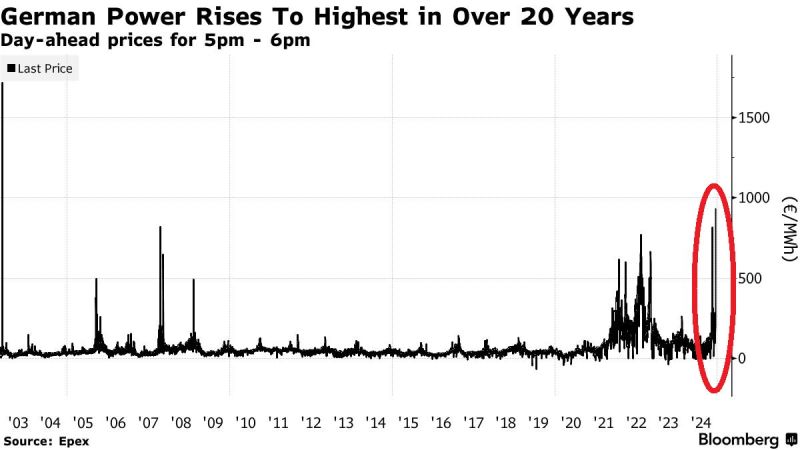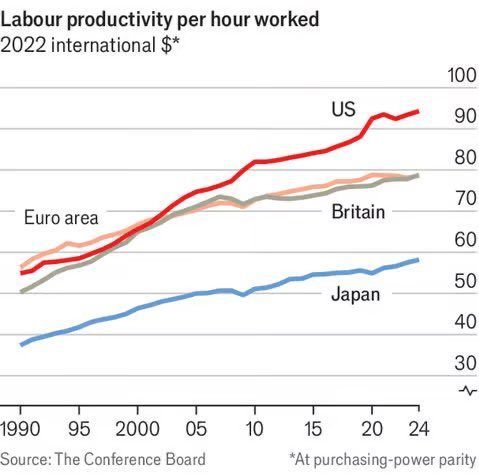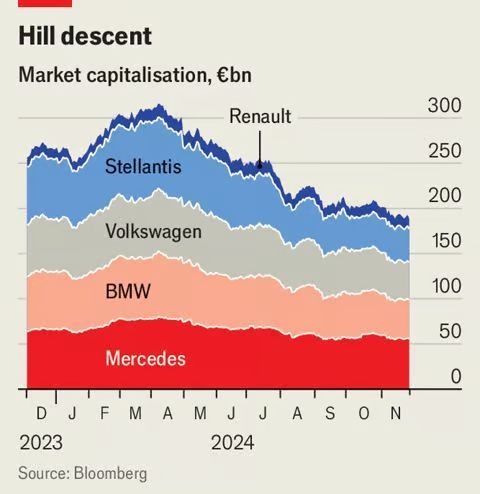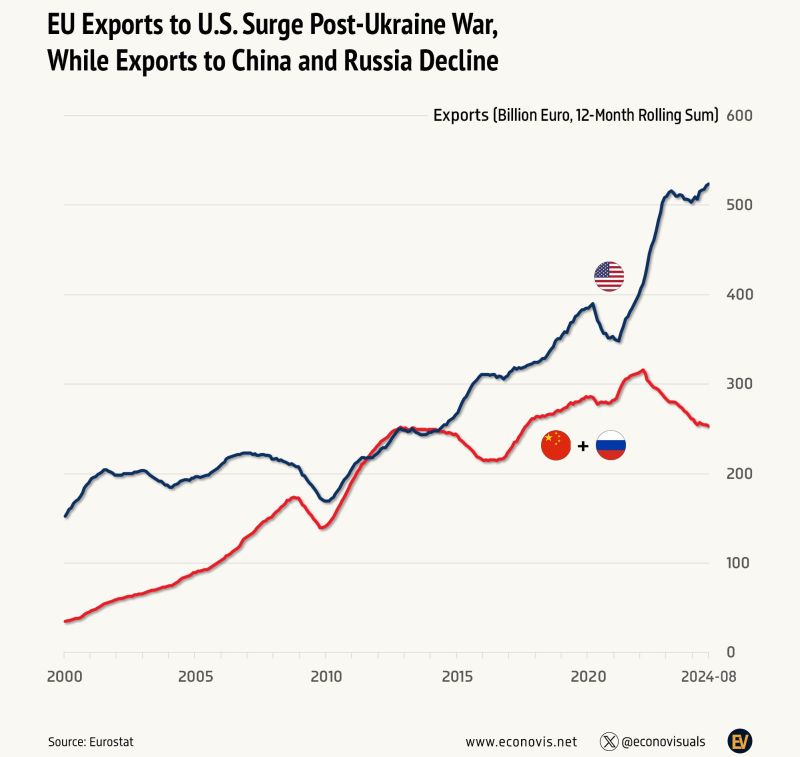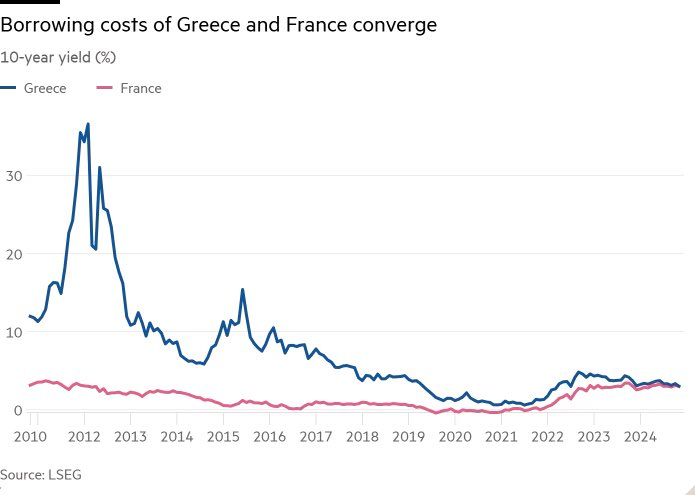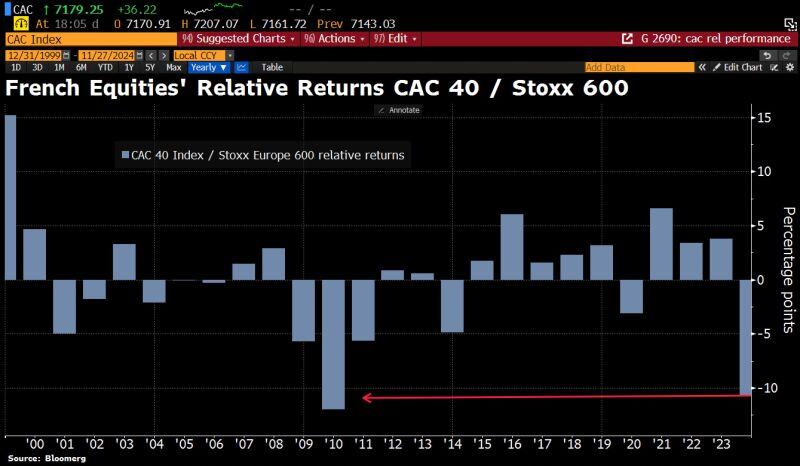Straight from the Desk
Syz the moment
Live feeds, charts, breaking stories, all day long.
- All
- equities
- United States
- Macroeconomics
- Food for Thoughts
- markets
- Central banks
- Fixed Income
- bitcoin
- Asia
- europe
- investing
- technical analysis
- geopolitics
- gold
- Crypto
- AI
- Commodities
- Technology
- nvidia
- ETF
- earnings
- Forex
- china
- Real Estate
- banking
- oil
- Volatility
- magnificent-7
- energy
- apple
- Alternatives
- emerging-markets
- switzerland
- tesla
- United Kingdom
- assetmanagement
- Middle East
- amazon
- russia
- ethereum
- microsoft
- ESG
- meta
- Industrial-production
- bankruptcy
- Healthcare
- Turkey
- Global Markets Outlook
- africa
- Market Outlook
- brics
GERMAN ENERGY PRICES ARE EXPLODING
This is not going to help... German power prices SPIKED to the levels seen during the 2022 energy CRISIS. Day-ahead prices for 5pm-6pm skyrocketed to the highest in 20 YEARS. This comes as wind generation plummeted as there has been almost no wind in recent days. Source: Global Markets Investor, Bloomberg
There is a reason why Americans are wealthier than others and keep getting wealthier.
What went wrong in Europe? 25 years ago Europe was more productive than the US. Source: Michael A. Arouet @MichaelAArouet
French President Emmanuel Macron came out fighting against opposition parties who he said “chose chaos”
by bringing down his premier in a historic no-confidence vote, vowing not to step aside before the end of his term. “The mandate that you have entrusted to me democratically is a five-year mandate, and I will exercise it fully until its end,” Macron said on Thursday. Macron’s term runs until 2027, but he is facing rising pressure from opposition groups to step down early. The president said he would name a new prime minister “in the coming days”, as he hit out at the far-right Rassemblement National and the leftist Nouveau Front Populaire alliance. Source: FT >>> https://on.ft.com/4ikxkhz
European automotive sector is facing deep crisis
• Demand for cars in EU has stalled and may never return to pre-pandemic levels • Outlook for exports has darkened amid US tariff threats and low Chinese demand Source: Agathe Demarais on X, Bloomberg
Europeans, especially the German carmakers,simply cannot afford losing the US market due to tariffs after taking a hit in other major markets.
They need to be really polite to Trump‘s administration... Source: Econovisuals, Eurostat
The chart of the day:
France’s benchmark bond yield matched Greece’s for the first time on record, the latest milestone in a week marked by mounting anxiety over the fate of Prime Minister Michel Barnier’s government. The rate on 10-year French notes, traditionally considered among the safest in the euro area, briefly rose to 3.03% before paring the move. That was the same as comparable Greek bonds, a country once at the heart of the European sovereign debt crisis. Investors are concerned that France may struggle to pass a budget for next year, with the far-right National Rally party threatening a no-confidence vote to bring the government down if its demands aren’t met. While French bonds rallied after Finance Minister Antoine Armand said he is prepared to make concessions on the 2025 budget, that did little to dent months of underperformance. “France is not Greece,” said finance minister Antoine Armand. "France has . . . far superior economic and demographic power which means it is not Greece.” Humility at its best... Source: FT, LSEG
OUCH! French stocks are set for their worst under-performance against European peers since 2010 as a budget standoff threatens to topple the govt.
Source: BBG, HolgerZ
Investing with intelligence
Our latest research, commentary and market outlooks


